For three days I talked more with Cedar, Marley, Joplin, Thor, Whoopsy, and Mudro than any human. Canadian Inuit dogs don’t make great conversationalists, but they do make great companions in the dead of winter. I’d eagerly encourage them up steep hills and beg them to stop when I needed a snack. In return, they’d just howl at me, always ready to run.
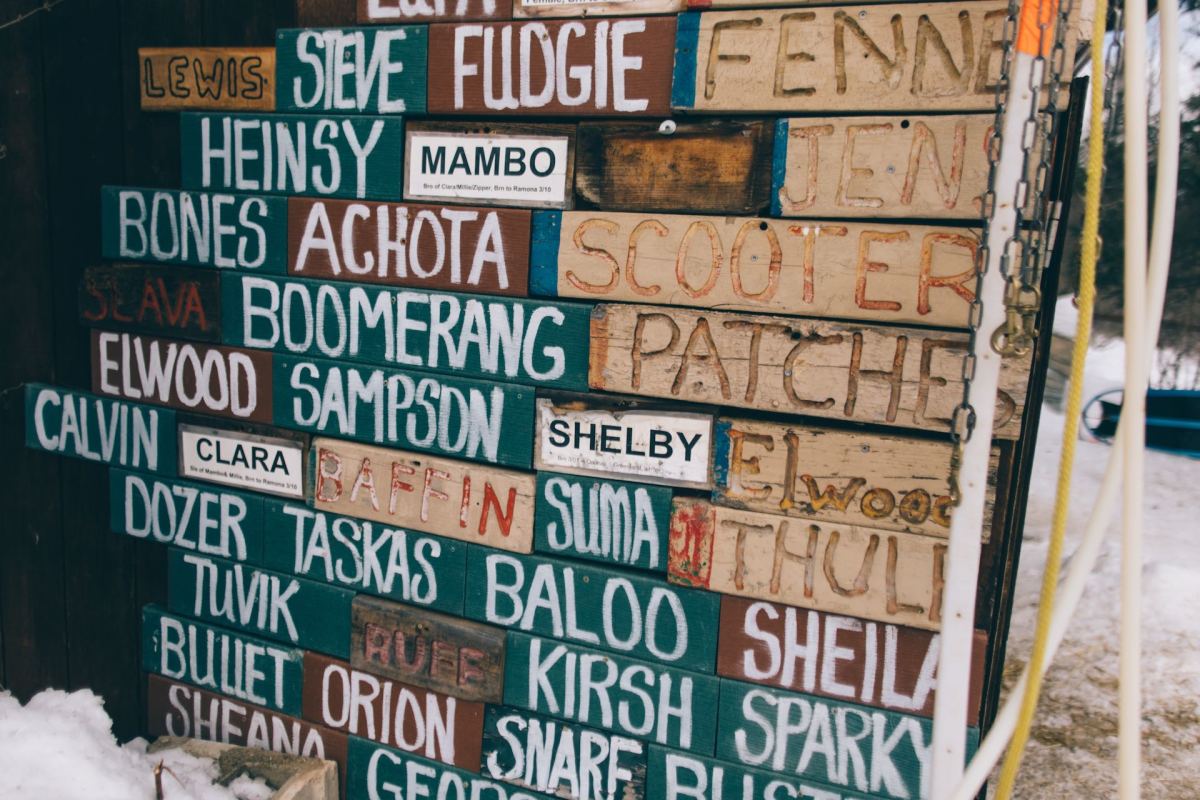
Along with my guide, Dave Freeman, I was on a three-day dog sledding trip in the Boundary Waters of northern Minnesota. This wilderness, adjacent to the Canadian border, is an iconic summer getaway and was instrumental in creating the Wilderness Act of 1964, protecting large swaths of land across the country. The Boundary Waters Canoe Area Wilderness (BWCA) is the most visited wilderness in the country and has been for decades. However, it’s only popular in the late spring, summer, and early fall. In February it was desolate. Empty, that is, except for us.
Landing in Minneapolis, I nabbed a four-wheel-drive rental for icy roads ahead and started the monotonous drive north along I-35. Nearing Duluth the route turns “inland” and enters the Boreal, a diverse forest that covers much of the northern Midwest. Locals here refer to everything in relation to Lake Superior, much like coastal dwellers do the ocean.
Passing through smaller and smaller towns, the feeling of adventure started to set in. This corner of Minnesota is famous for three things: iron-ore mining, pond hockey, and the world’s largest web of connected lakes, swamps, and rivers that is the Boundary Waters. In winter time the, most popular recreation activities—ice fishing, cross-country skiing, and snowmobiling utilize the frozen landscape. If you live here, you better love the cold.
Paul Shurke understands the appeal. Shurke made his name as the first to run dogs all the way to the North Pole, unsupported. Over 40 years ago, he founded Wintergreen Lodge, a dog sledding outfitter based near Ely, Minnesota. Paul’s wife Sue runs the lodge’s sister company Wintergreen Northern Wear, which makes anorak coats that are easy to spot by their bright colors and detailed embroidery. When I arrived at the lodge, Dave Freeman was the first to greet me, pulling a kid’s plastic sled toward the lodge. Freeman was preparing for our trip, starting with the most important element: dog food. I followed him up the hill to the dogs, not sure what to expect.
Freeman is tough to explain in few words. In short, he’s kind and incredibly thoughtful. Two years ago, along with his wife Amy, Dave spent a full year in this local wilderness, canoeing and dog sledding to advocate against sulfide-ore copper mining near the BWCA. Now in his early 40s, he’s run dogs for over 20 years. Soft-spoken, wise from years of spent sleeping on the ground, and perpetually curious, Freeman is the perfect person to learn mushing from.
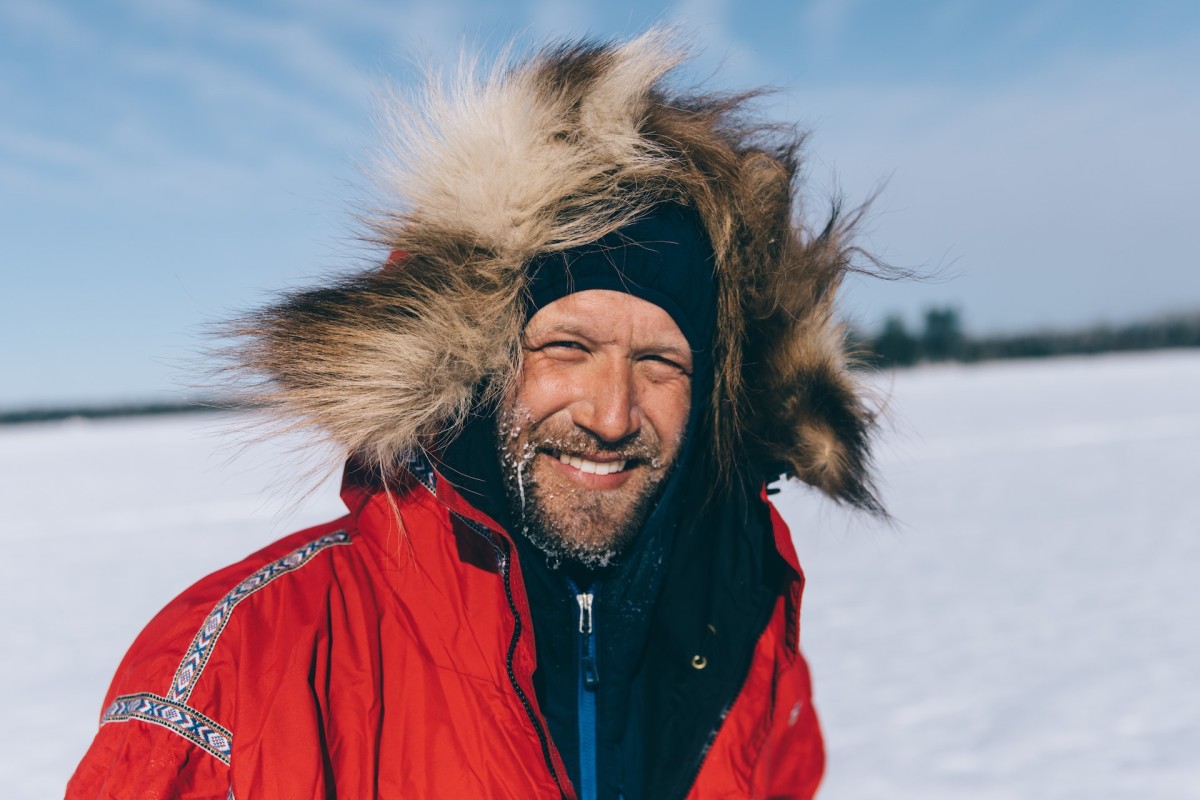
We chatted briefly about food—simple meals cooked on a white gas stove—and the importance of spare baselayers, warm gloves, and down pants. I passed my first test, bringing enough clothing for Freeman to believe I would survive. Only slightly reassured, we loaded all of our personal and shared gear into the dogsled and pushed it toward the dog yard, serenaded by a growing chorus of howls.
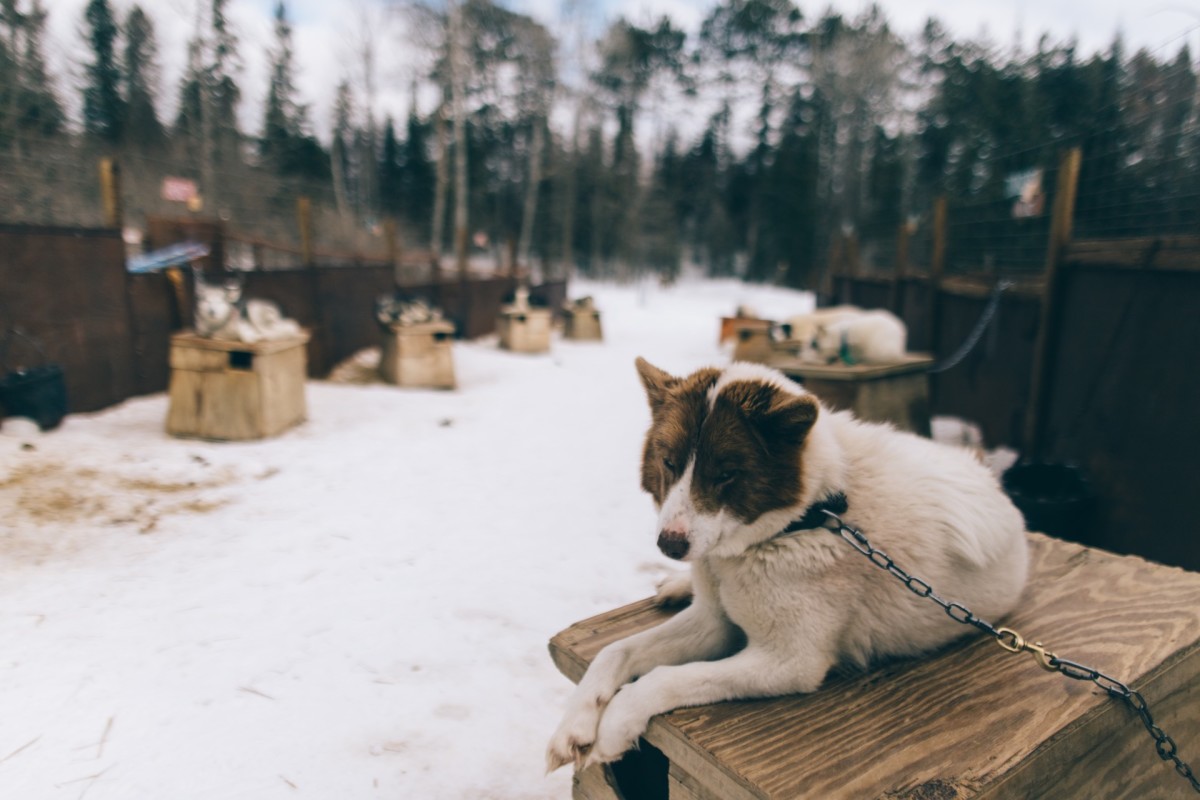
It took maybe 10 minutes to select harnesses and tether our dogs to the sled. Each dog has a “tug line” to pull on and a “neck line” that keeps them organized, in double file. Canadian Inuits aren’t race dogs; they are bigger, slower, and a lot more friendly. Still, standing on the back of the sled waiting to release the rope that anchored me in place, I could feel energy surging. They wanted to go.
Wintergreen has a hands-on philosophy. If you want to pet a dog, or feed a dog, run your own team or otherwise, you just hop in and do it. It’s a great way to learn about mushing and probably the best way to quickly build a relationship with the dogs, but also intimidating. Trial by ice and snow.
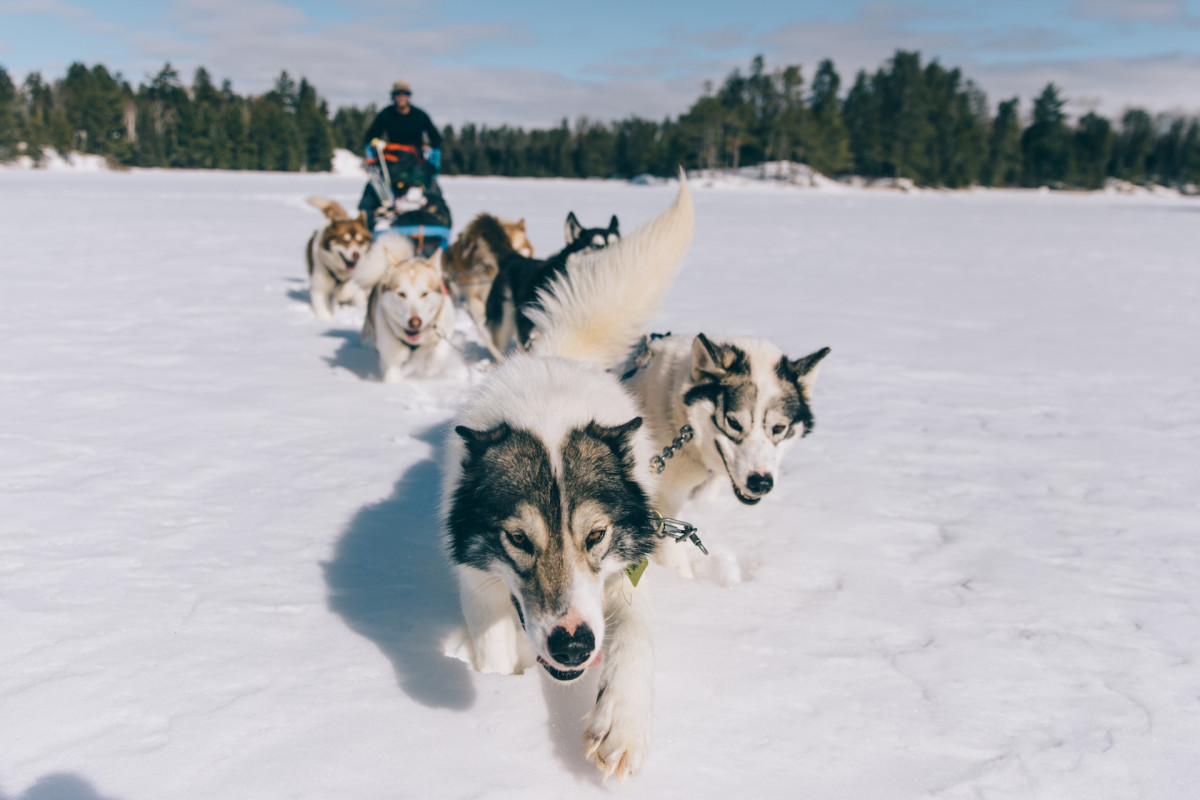
Upon departure my trial began with a flight across White Iron Lake and then into a nearby trail system. Freeman skied ahead, showing the dogs the route. I held on for dear life, hoping the dogs would take it easy on me. Soon enough I was getting the hang of it, learning when to brake, how to lean into corners, and why it was crucial to gain some respect from these fiery bundles of fur.
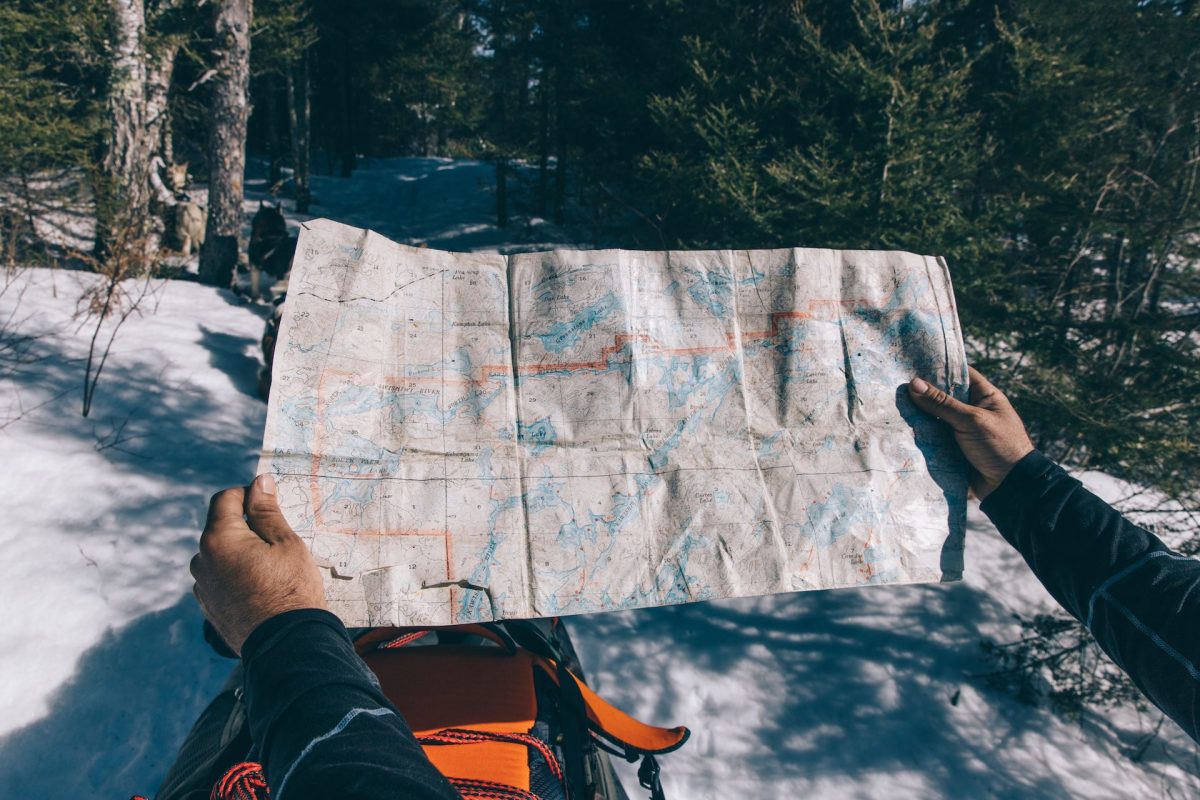
In a few hours, we reached the wilderness boundary and the end of established trails. Dropping our camping permit in a small box, we headed north on the Kawishiwi River, just a mile to ground zero of the proposed Twin Metals mine site that Freeman has worked tirelessly to stop. From here and for the next few days we’d be crossing frozen lakes, toiling across snowy portages, and winter camping at night.
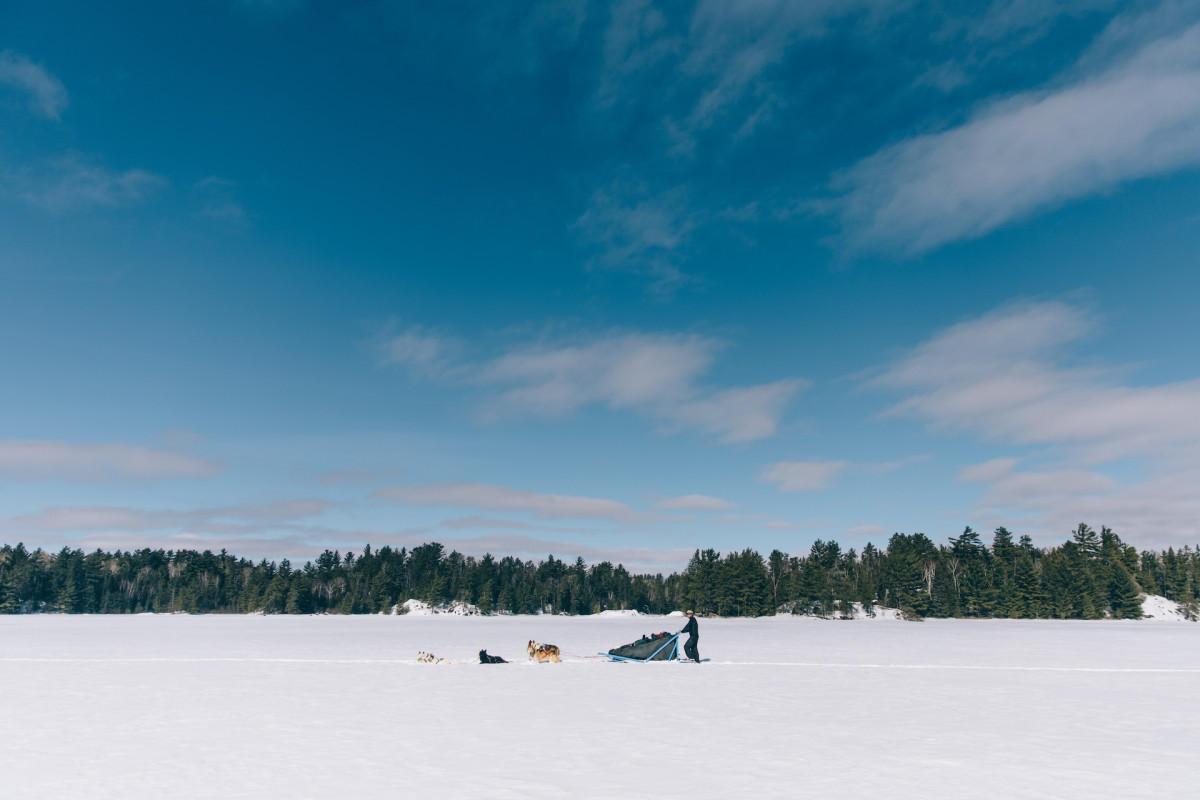
By late afternoon I was starting to find a flow, learning when to get off the sled and run adjacent to it, helping the dogs keep a steady pace through deep snow. With less than an hour of daylight, Freeman found a small bay protected from the wind and we began to set up our small camp. The first step was setting up a line for the dogs and feeding them all. Surprisingly, sled dogs don’t drink a lot of water, so we boiled a pot and hydrated all of their food, to trick them into drinking some.
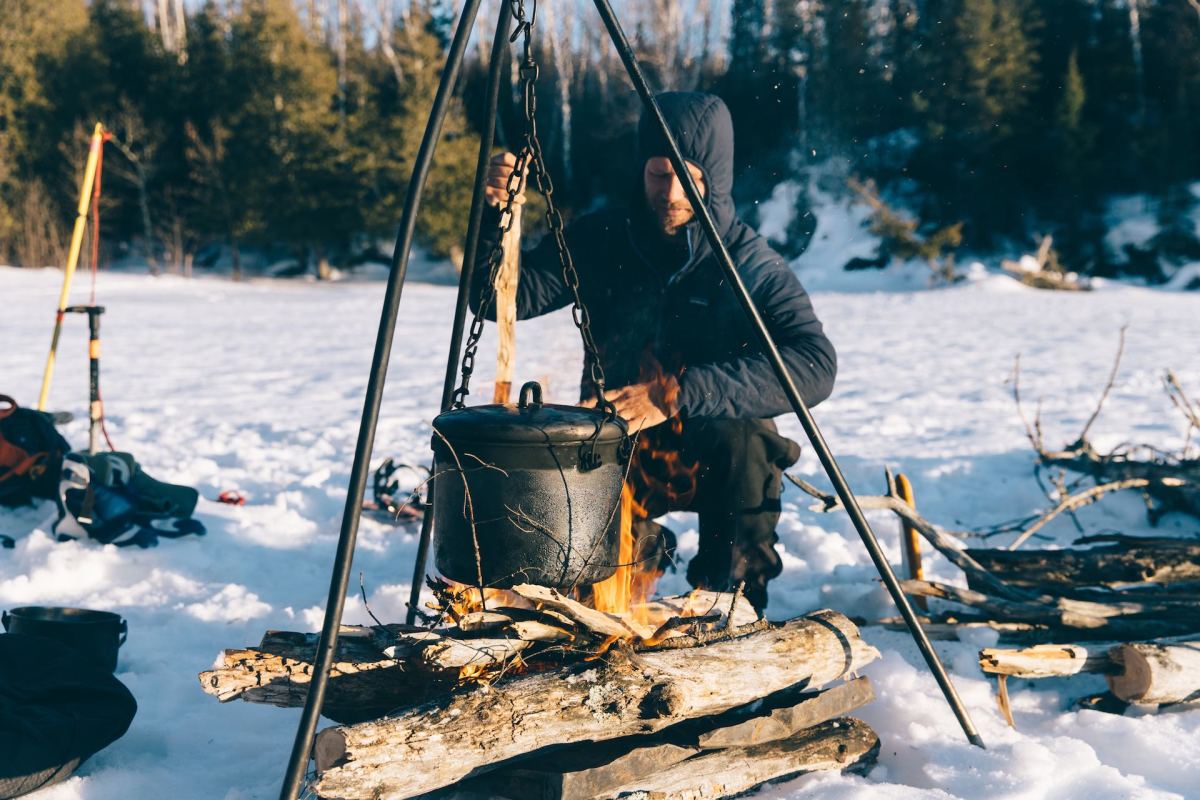
In the winter, finding water is the biggest challenge and most important task. We had a small chisel to chop through the ice and when we weren’t near a lake or river, we would melt snow over a fire for our drinking and cooking needs. It’s a laborious process, but there isn’t a better solution. If anything, the added effort makes you appreciate the ease of filling a glass at the tap.
After a hearty dinner and a short time around the fire, I headed to bed. With a clear sky and temps in the low teens, we opted to forgo the tent and sleep under the stars. I used a series of foam pads to elevate and insulate from the ice below, plus a warm sleeping bag with a fleece liner to stay warm. I also found it helpful to wear a puffy and warm cap to bed for the long night ahead.
Our next day was similar, crossing untracked lakes and small trails between them. I managed to only fall off the sled once on a tight left turn. Freeman took a moment to let me know that falling off is essentially musher initiation. Following the river provided added challenges with a number of open-water spots that to avoid. We stopped for a break mid-afternoon to watch three wolves scan us from afar. There aren’t many places as wild as the BWCA in winter.
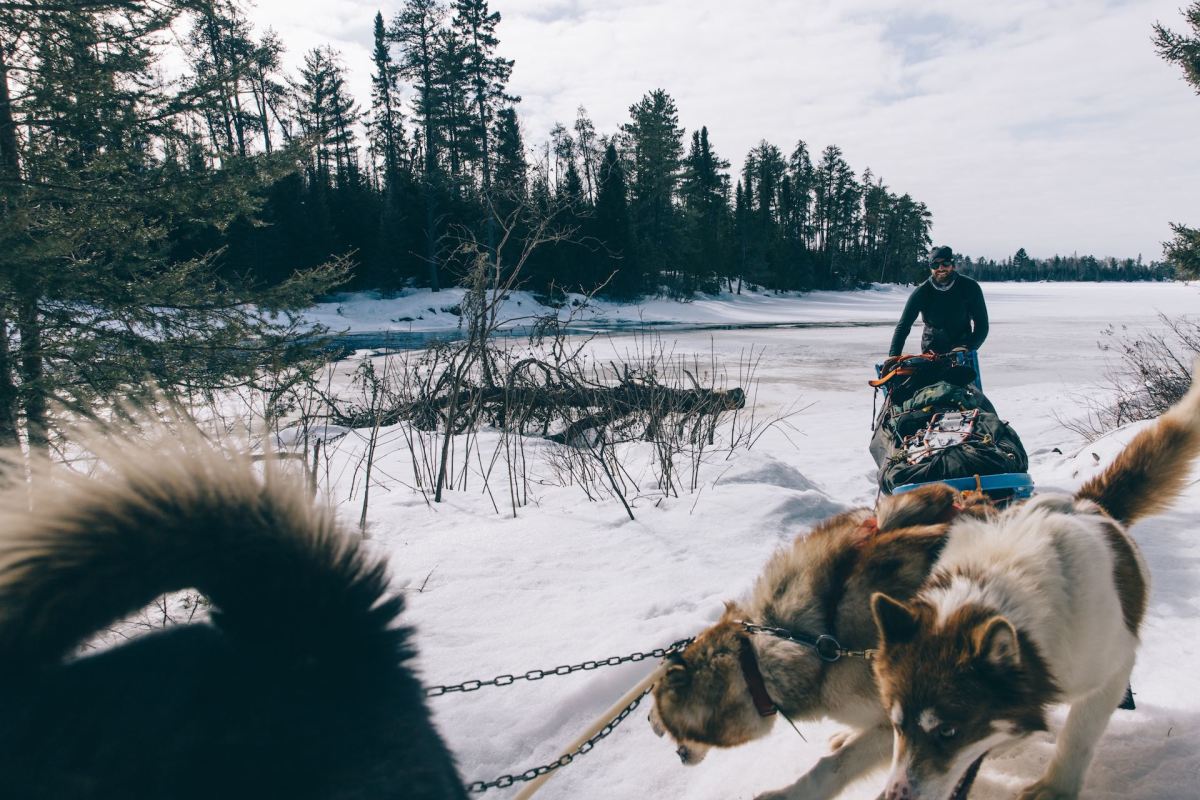
Making good time as I improved at pacing the dogs, we added an extension to the route to see one of the last stands of old growth white pines. Camping nearby, we gathered wood, made a fire, and hydrated dog food. When mushing, the dogs’ needs come first. Once they were fed, we changed into warmer layers and started making our own dinner, trading stories of past trips and future dreams.

That night temps dropped below zero, but I still felt warm in my sleep system. Waking with the sun, things were starting to feel natural. After a quick breakfast of coffee and sausage links, I was back on the sled, navigating sharp corners and bumps in the trail, caused by occasional snowmobile use. By lunch we were back at the lodge, ending our whirlwind tour as unceremoniously as it began. Putting the dogs back in their respective houses, I had a moment of gratitude. Unplugged for three days I’d found friendship with dogs, calmness and clarity, and a new way to explore the one thing I love most, real wilderness.
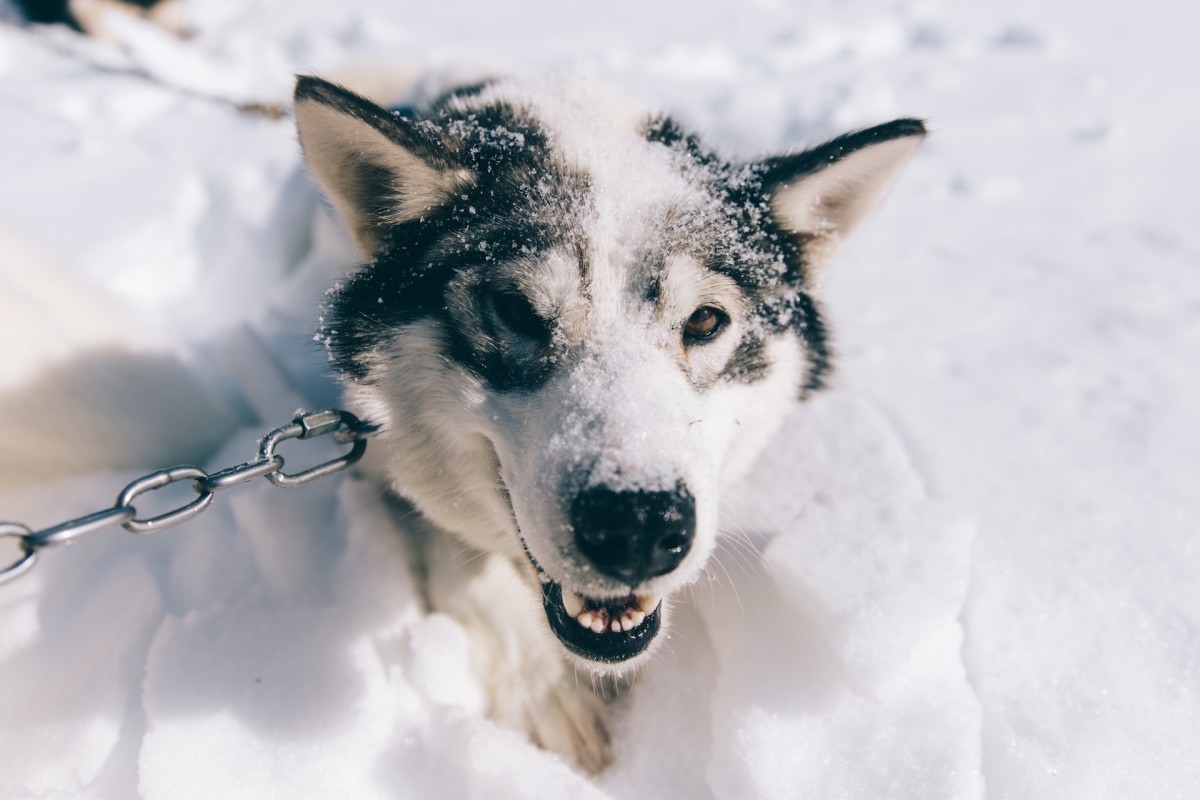
— See more recent dispatches from Cochrane, including coverage of life on an Alaskan crab boat, the Baja 1000, and an emergency canyon evacuation deep in the Mexican jungle.
from Men's Journal https://ift.tt/33ot0Yx
No comments:
Post a Comment